6 Small Business SEO Strategy Tips

Hand off the toughest tasks in SEO, PPC, and content without compromising quality
Explore ServicesIn today’s competitive online market, businesses of all sizes are hustling for the attention of modern consumers.
Not an easy task, particularly for a small business.
Thankfully though, SEO levels the playing field.
With 35 percent of product searches starting on Google, SEO is one of the most effective ways for small business owners to get their brand out into the spotlight.
To get you started, here are 6 tips for building a rank-boosting small business SEO strategy.
6 Tips to Win with a Small Business SEO Strategy
If you’ve ever wondered “what’s the best SEO strategies for small business,” you’re in the right place.
Here’s a list of SEO tips that are sure to take your content from zero to hero.
1. Start With the Fundamentals of Small Business SEO
Whether you’re a brick and mortar store or a budding online business, before venturing into more advanced methods of SEO – like link building – let’s be sure you’ve got the basics honed in.
Believe it or not, Google places a lot of emphasis on user experience. So much so, the search engine has a whole tool dedicated to it.
The Google team calls it Core Web Vitals.
Amongst many other factors, Core Web Vitals tracks three key metrics – speed (First Input Delay or FID), responsiveness (Largest Contentful Paint or LCP), and visual stability (Cumulative Layout Shift or CLS). So if your website is slow to load, is hard to navigate, or any other general haphazardness is afoot, your site is likely to be deprioritized in the SERPs.
With that said, how can you be sure your site isn’t being penalized by Google’s Core Web Vitals?
The best way, through the use of Google Search Console (GSC).
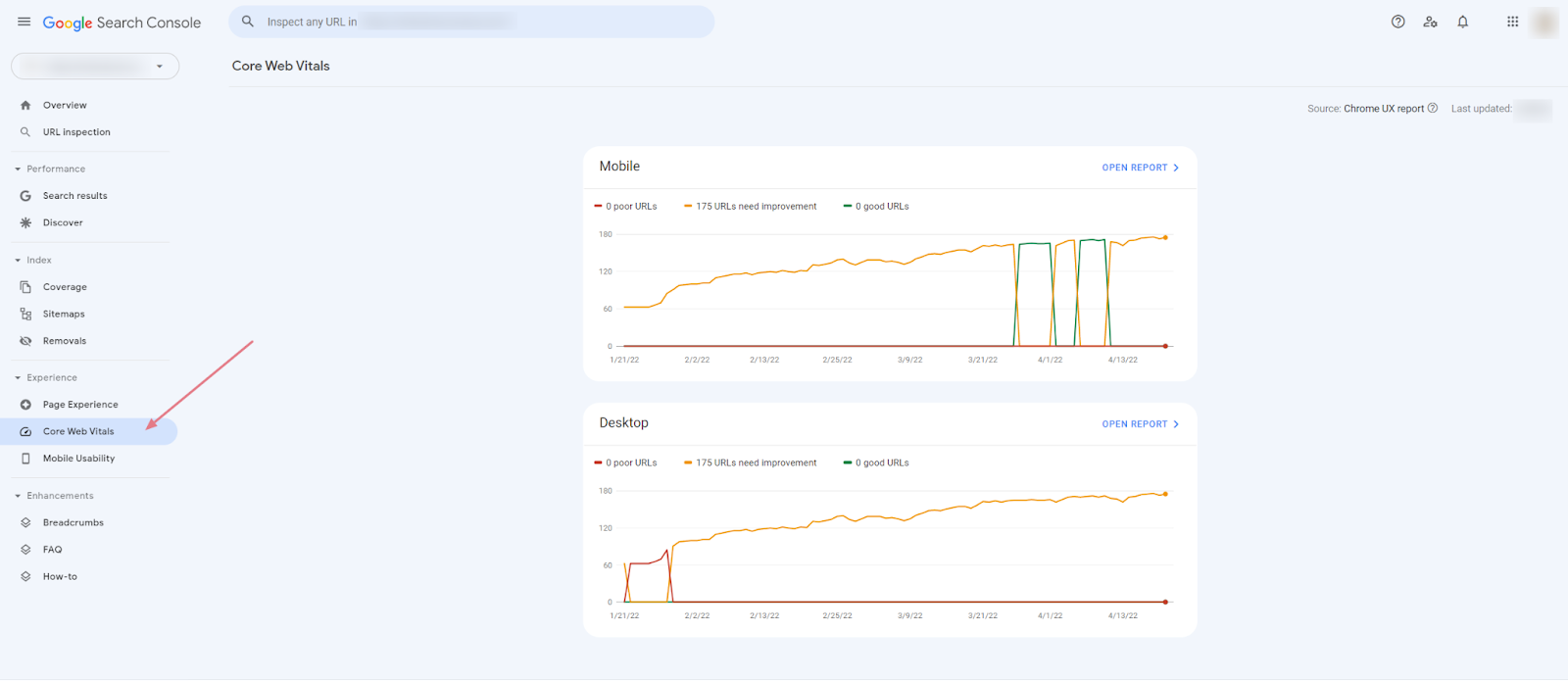
Snuggly fitted within GSC’s dashboard, you’ll find Core Web Vitals. Here you can see everything you need to know about an individual web page’s performance, track site speed, and watch for any notifications alerting you to issues that may be plaguing your website.
Additionally, Core Web Vitals integrates another free Google tool into its various functions called PageSpeed Insights. With PageSpeed Insights, you can run a speed analysis on individual web pages to get a feel of how quickly they load and which elements of the page require improvement.
Once any issues are rectified, your site’s reputation with Google will improve and so will your site’s rankings.
2. Optimize for Local Search
For those businesses that are operating on a local scale, your second point of call should be to set up a Google My Business profile.
Google My Business (GMB) is a free tool from Google that helps businesses manage their online presence. The tool allows businesses to create a business profile on directories, which includes citation information like a business’s name, address, and phone number (NAP). The newly created profile will show up in Google Maps and local search results making it easier for potential customers to locate you.
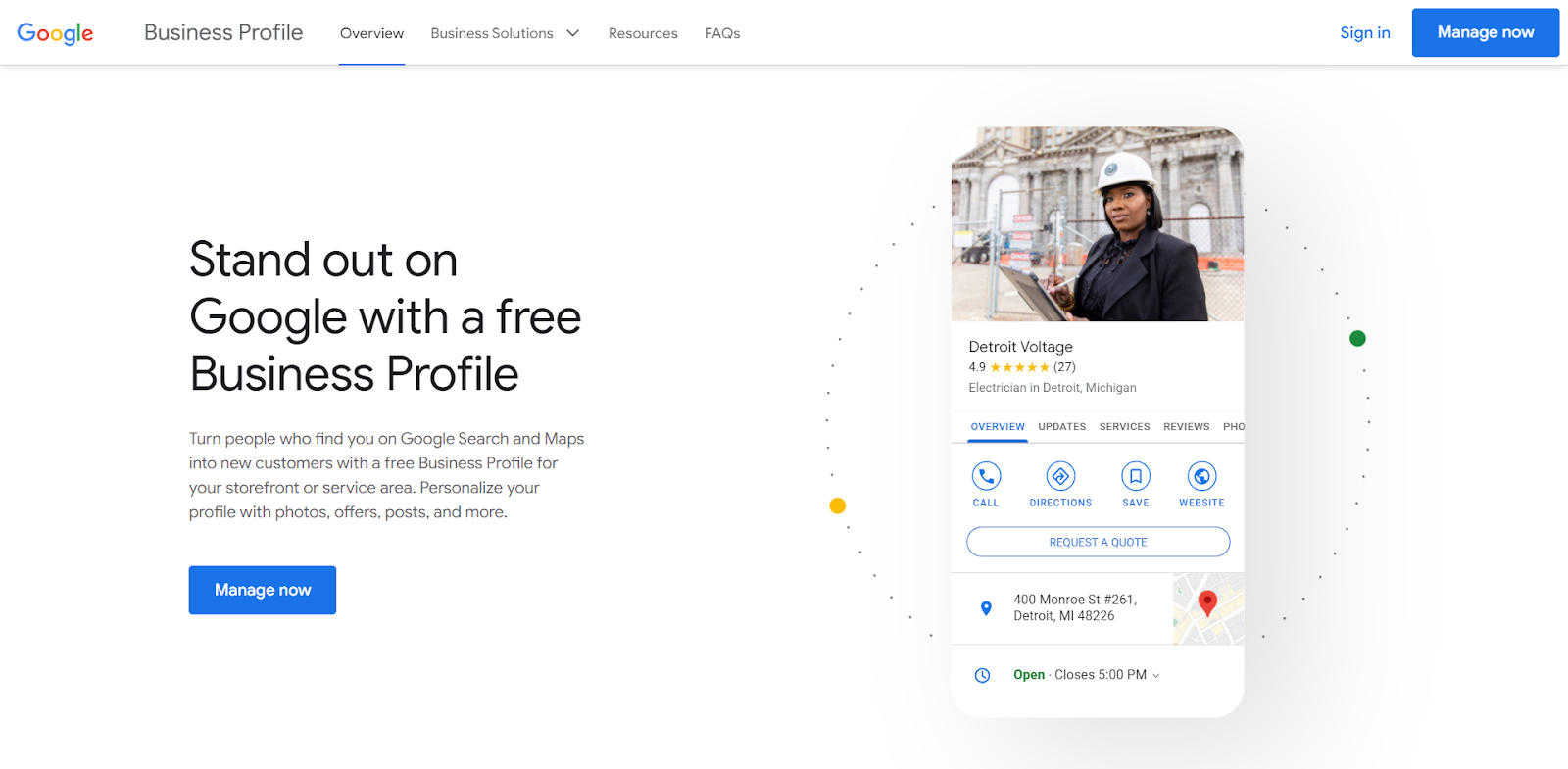
Additionally, businesses can use GMB to connect with customers through reviews and their various social accounts.
Cool, right?
Sure. But why should local businesses sign up for business listing on GMB?
There are many advantages to using Google My Business. The platform allows businesses to control their business’s information and how it appears in search engine results pages (SERPs). For instance, businesses can feature photos and videos of their products and services, show off their menu, or showcase any specials or upcoming events they may be holding.
Oh, and check this out.
According to Google, 60 percent of smartphone users have contacted a business directly from GMB results. And up to 5 percent of GMB listing views result in either a click, call, or other customer action.
Doesn’t sound like much, but seeing as, on average, businesses that have a GMB profile receive about 1,000 profile views per month, that means 50 more customers will interact with your business on a monthly basis.
Not bad for a local SEO service that literally costs your business nothing to use.
3. Target Keywords That’ll Actually Drive Conversions
I’m sure you’ve heard all the chit-chat and hype around keyword research. You know the usual stuff, like prioritizing low competition keywords and phrases, targeting keywords with high search volume, or using long-tail keywords to find unique opportunities that’ll bring more organic traffic to your small business website.
You know, that kinda stuff.
While there is no doubting this is the right approach for small business, without these site visitors actually converting into customers, simply driving traffic to your site isn’t going to pay the bills.
For this reason, you’ll want to set up a content strategy around persuading people into actually making purchases.
The best way to do this?
Through targeted traffic.
Target traffic is the specific audience you want to reach with your marketing efforts.
Why?
Simple, these site visitors are the most likely to purchase something from you. After all, if you’re not targeting the right people, all your hard work driving traffic to your site will be for naught.
So, how can you identify your website’s target traffic?
One way is to look at your website’s conversion rate. If you’re not seeing the conversions you want, it may be because your site isn’t targeting the right people.
For example, if you’re a B2B company – not a B2C company – that is unknowingly targeting consumers with your current content marketing strategy, you’re likely not going to see the conversions you want. In terms of this example, a far more effective approach would be to focus on targeting keywords that have a higher likelihood of attracting business owners that will be interested in your products or services.
Kind of like this article, am I right?
4. Leverage Popular Search Queries
Aside from ranking search engine keywords, there are a multitude of search terms – specifically community questions – that your small business’s content strategy can center itself around to drive organic traffic and backlinks.
Frequently asked questions you’ll find on social media platforms like Reddit or crowdsourced question-and-answer platforms like Quora are great resources for these types of search queries.
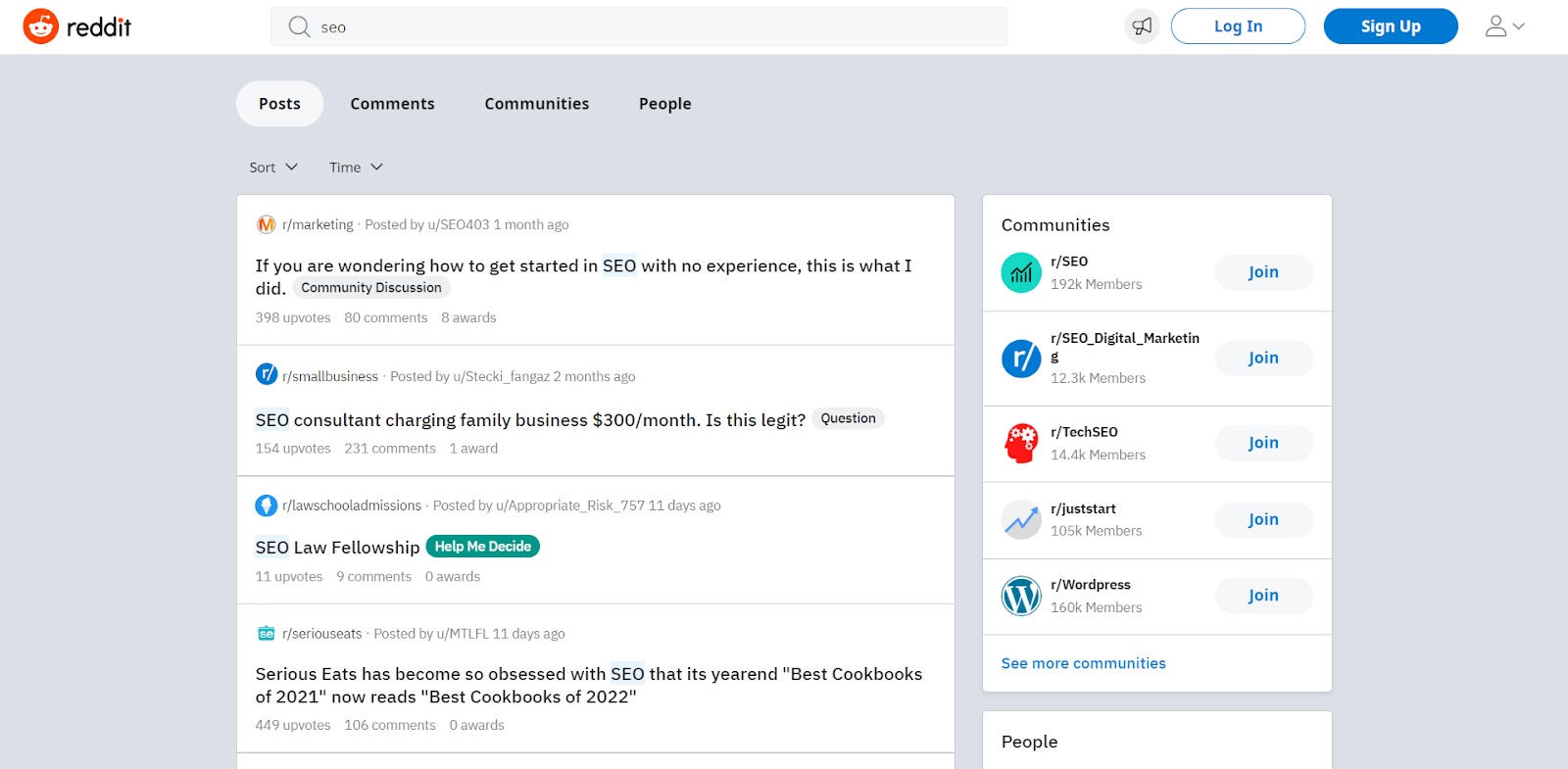
Basically, there’s two ways to leverage these questions to your advantage.
The first involves positioning yourself as a source of credible information. You can do this by providing answers to community questions that are well-written, informative, and interesting to read. Done correctly, you can establish yourself as an expert in the field. That way, when people come across you in the SERPs, they are likely to trust you personally and the content that is published on your website.
Just be sure not to blatantly self promote yourself or your business.
This isn’t some soapbox you can stand upon to push your website’s content. Users, particularly on Reddit, dislike self-promotion. Some subreddits actively take down content that’s deemed as self-promotion, while some sub moderators will actually permanently ban users from their community that go against their rules of conduct.
And if the moderators don’t get you, the users of a subreddit certainly will.
Unless a subreddit permits self promotion, users, as they refer to it, will “down vote you to oblivion” for this kind of behavior.
Not something that’s going to reflect well on you or the good name of your business.
The second method involves pulling FAQs from these platforms and creating high-quality content that answers a community’s questions. While you may not always find these questions or search terms in SEO tools like Moz, SEMrush, or Ahrefs, that isn’t to say the term won’t drive website traffic.
If people are asking these questions on social media, they are likely going to search for them on the SERPs. Whether that be now or into the future.
The advantage of this?
You’ll beat SEO search term trends. By the time your competitors notice a newly appearing, high-volume search term through their fancy SEO tools, it’ll be too late.
You’ll already have content ranking for that search term on the SERPs ready and waiting to scoop up site traffic as more people begin to talk about the topic at hand.
5. Take Advantage of Technical SEO
Now for the crème de la crème of search engine optimization – technical SEO.
Technical SEO covers everything from a website’s infrastructure to its on-page SEO elements, like title tags, meta-tags, and anchor text. While it may seem like a complex and daunting task, following a few basic principles can help make your site more visible to Google and improve your chances of ranking high on the first page of the SERPs.
If you are unsure where to start with technical SEO, the best place to begin is with an SEO audit. A suitable SEO audit will evaluate all aspects of a website, from the on-page content and structure, to the website’s backlink profile and technical elements. It will also identify any potential penalties that may be affecting the site’s online visibility.
The results of an SEO audit can be used to create an actionable plan to improve a site’s ranking on the SERPs. This plan should include both short-term and long-term goals, as well as specific tasks that need to be completed in order to achieve them.
Google also has a suite of online tools that can help technical SEO optimization. We’ve mentioned a couple of them already – GSC and PageSpeed Insights – but another great tool for this application is Google Analytics.
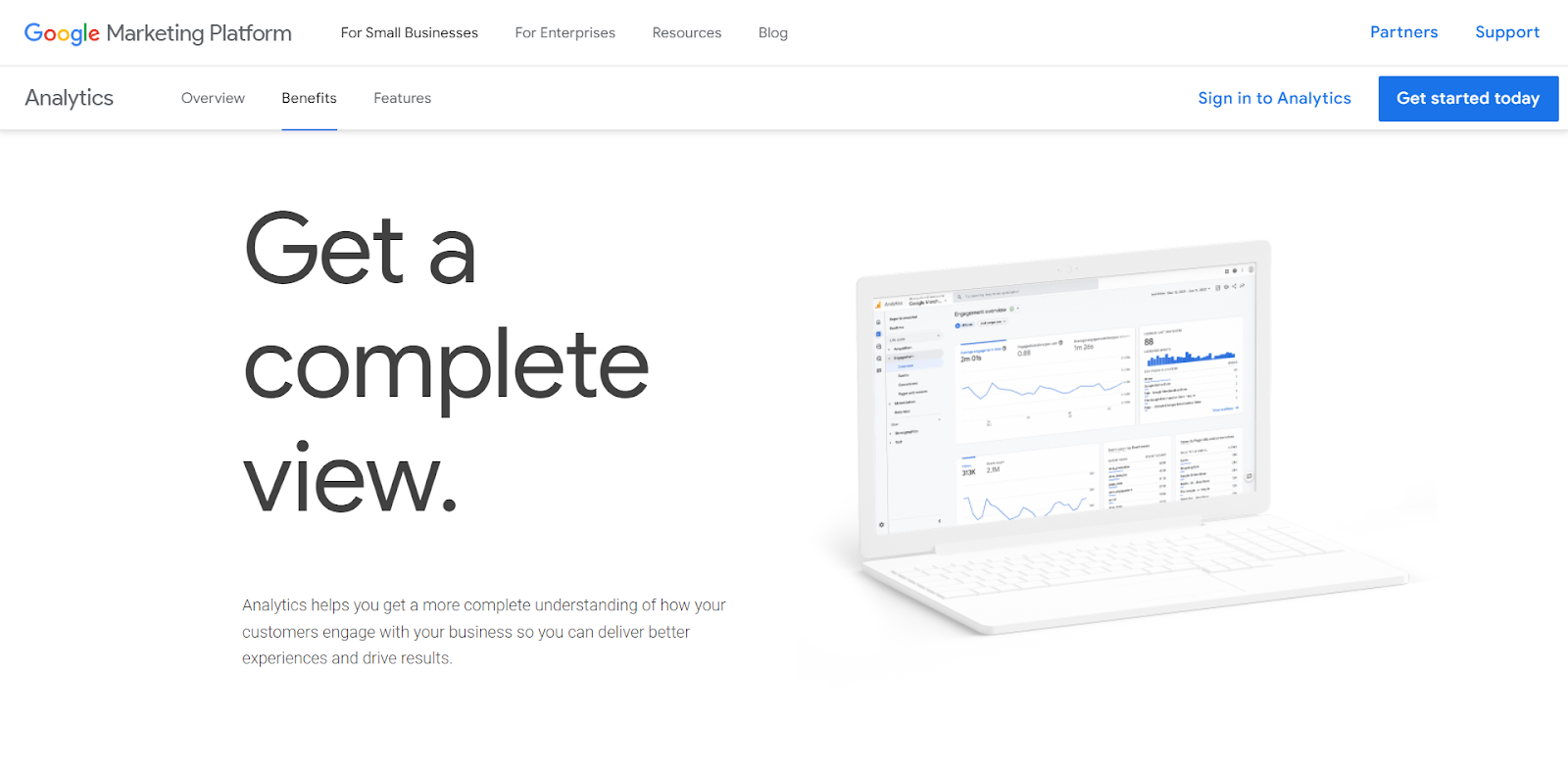
Google Analytics is a powerful tool that can help identify and fix many common technical SEO problems. By tracking page views, unique visitors, and other important metrics, you can see which aspects of your website are performing well and which could use some improvement.
For example, if you notice that your website’s landing page is not receiving as many views as you would like, you can use Google Analytics to identify any issues that need your attention.
Additionally, Google Analytics can help track your website’s bounce rate and conversion rate. If you notice that a large percentage of your visitors are leaving your website after viewing only one page, you may need to work on improving your website’s navigability.
6. Build a Comprehensive Backlink Profile
Backlinks is one of the, if not the most heavily scrutinized ranking factors that Google’s algorithm pays attention to. But let’s not sugarcoat it, no matter if you’re an SEO expert, SEO agency, or small business owner, amongst all the SEO strategies, backlinks are one of the hardest to master.
Although as hard as it may be to secure high-quality links, that isn’t to say you should ignore this vital aspect of SEO.
To hit home how important backlinks are, according to a survey conducted by uSERP, out of 800 respondents 58 percent nominate backlinks as the most impactful ranking factor.
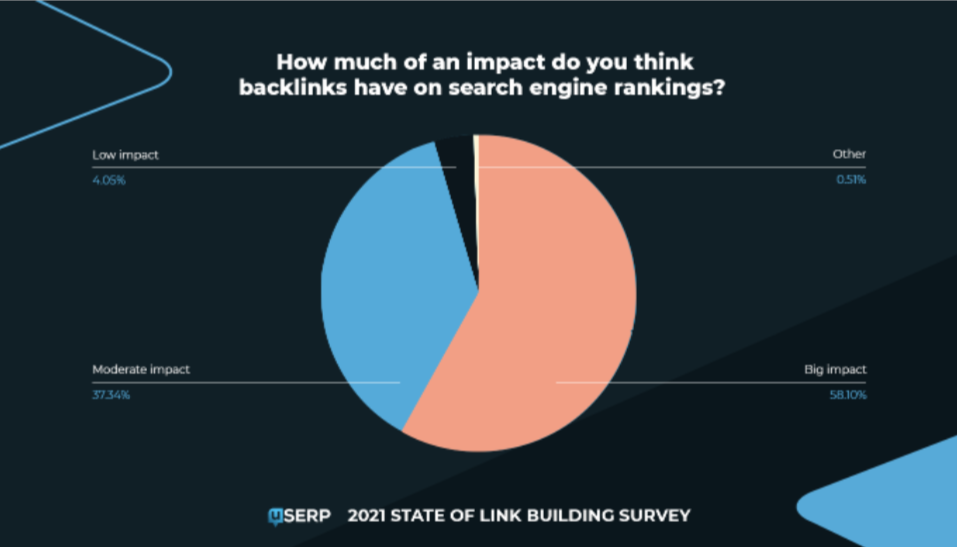
But don’t just take their word for it.
A case study carried out by Backlinko, on no less than 11.8 million Google search results, found web pages that ranked number 1 on the SERPs had an average of 3.8x more backlinks than those pages in position 2 through 10.
So if you really want to increase your organic search traffic, backlinks have to be at the forefront of your overall approach to digital marketing.
To help, understand that there are two main types of backlinks: dofollow and nofollow.
Dofollow links are the gold standard for backlinks – they tell Google’s web crawlers to follow a backlink and index the content it finds. Extremely beneficial to your website’s SEO. Nofollow links tell Google not to, well, follow a link. They may not be quite as beneficial as dofollow links in terms of SEO, but they can still help with referral traffic and they add value to your backlink profile.
Okay, so what’s the best way to build out a backlink profile?
There are a few things to keep in mind when trying to secure different types of backlinks:
- Quality trumps quantity. It’s more important to have a few links from high-quality sources than dozens of links from low-quality sources.
- Resist black hat link building tactics. Avoid link schemes and artificial methods of acquiring links, such as using link farms or using spammy backlink tactics.
- Create high-quality content. Focus on creating content that people will want to share and link to organically.
- Leverage your socials. Use social media accounts like LinkedIn to promote your content and attract links from influential websites and bloggers.
Summary
Implementing a small business SEO strategy can be a great way to improve your website’s visibility and organic search traffic. A solid strategy will increase website traffic and boost consequent revenue.
Loganix offers a variety of SEO and backlink building services that can help you improve your website’s search engine rankings. To learn more about our services, please visit our website or contact us today.
Hand off the toughest tasks in SEO, PPC, and content without compromising quality
Explore Services




